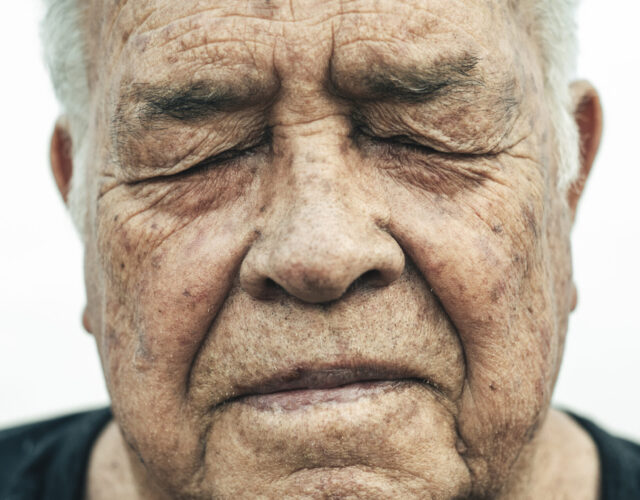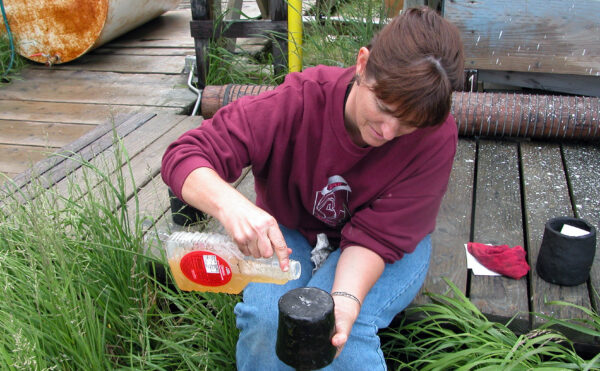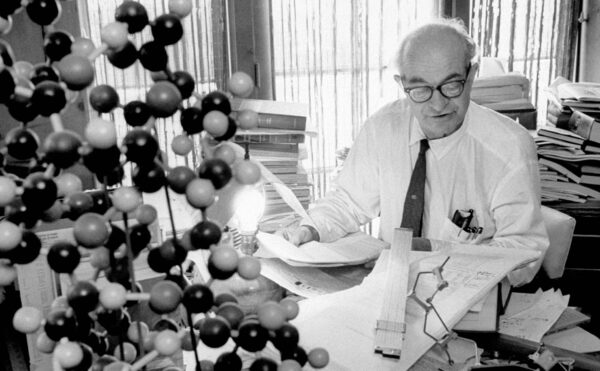Story by Joshua Wheeler; photography by Reto Sterchi. A version of this story previously appeared in Swiss magazine Republik.
According to most accounts, the desert was uninhabited. The stories will tell you that when the first atomic bomb was detonated on July 16, 1945, hardly anyone lived nearby.
A 2015 PBS documentary about the test, codenamed Trinity, begins, “Here, miles and miles from anywhere. . . .” In his Pulitzer Prize–winning history, The Making of the Atomic Bomb, Richard Rhodes writes of the Trinity test, “A bomb exploded in the desert damages not much besides sand and cactus and the purity of the air.” And the biography American Prometheus, another Pulitzer Prize winner on which this summer’s $100 million blockbuster Oppenheimer is based, depicts physicist Robert Oppenheimer roaming New Mexico in 1944, “searching for a suitably isolated stretch of wilderness where the bomb could be safely tested.” And yet, a few sentences later, the writers of American Prometheus, Kai Bird and Martin Sherwin, stumble into a contradiction. Upon choosing a location in southern New Mexico, “the Army staked out an area eighteen by twenty-four miles in size, evicted a few ranchers by eminent domain and began building . . . bunkers from which to observe the first explosion of an atomic bomb.”
It’s those evictions that make the choice of Trinity’s location so haunting. Robert Oppenheimer and the Manhattan Project knew from the start that this place was not all that isolated and was far from uninhabited.
There were, in fact, dozens of families within 20 miles, largely poor families of ranchers and farmers, many Hispanic and Indigenous, who unwittingly went about their daily lives in the first fallout of the atomic age. Now, those who were infants and children downwind of the detonation of the “Gadget”—a code name for the plutonium bomb used in the Trinity test—are nearing the end of a decades-long battle to be recognized and compensated for generations of illness they trace to exposure from radioactive fallout.
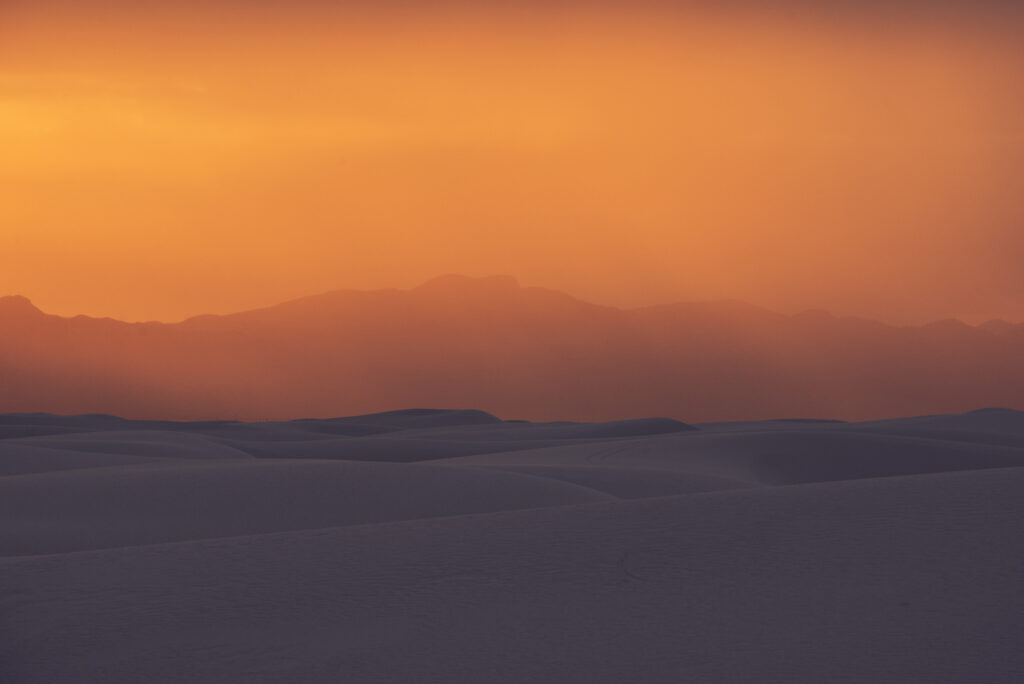
Two months before the Gadget exploded, scientists and soldiers gathered at the Trinity site to hold what they called a “rehearsal.” At dawn on May 7, 1945, they detonated nearly 100 tons of TNT spiked with plutonium. In the dark hours before this pretest, Manhattan Project doctors used battery clips to leash live rats to wires positioned around the mountain of explosives. The doctors were concerned the coming atom bomb test might create dangerous radioactive fallout. This last-minute experiment, poorly designed and executed, yielded no results: the rats closest to the blast were incinerated totally, while those further off were blown free of their wires and never recovered. One might think that researchers familiar with the complex and intricate physics used to engineer the atomic bomb would be able to conduct a less crass experiment; but the rat test, in all its callous ineptitude, was wholly characteristic of the American approach to radioactive fallout in the early days of nuclear weapons development.
When, two months later, the first atomic bomb was finally tested, it was done over the objections of doctors and a meteorologist who warned the weather that morning was likely to spread fallout far and wide over New Mexico’s civilian population. “Right in the middle of a period of thunderstorm,” the meteorologist complained in his journal of the scheduled test, “What son-of-a-bitch could have done this?”
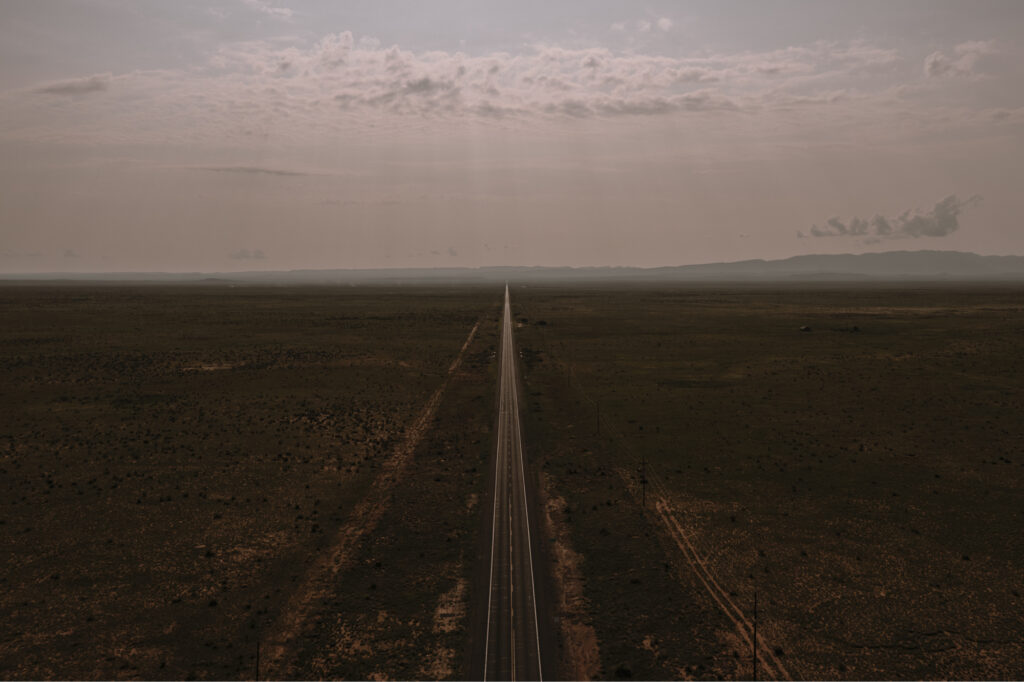
As the storm raged in the hours before the test, Italian physicist Enrico Fermi warned Oppenheimer, “There could be catastrophe.” Oppenheimer took a break from reading the poetry of Baudelaire to relay to the military his version of the warning: “The weather is whimsical.” The decision was made to proceed with the test.
The exploding Gadget brought to a stretch of New Mexico desert the kind of heat that until then had existed only at the cores of stars. It was just before 5:30 a.m., and the sun was yet to rise, but for a few seconds there was absolute light, otherworldly in its intensity and visible for hundreds of miles. The shockwave broke windows 180 miles west at a bar in Silver City. Liquified sand rose with vaporized steel and the bomb’s plutonium to form a mushroom cloud 38,000 feet high. Then came the wind, scattering the cloud, its ash coating the land as chunks of green glass formed when the sand cooled and fell from the sky. Eighty percent of the bomb’s plutonium core failed to fission, making that first bomb a “dirty bomb” by today’s standards, and all of that radioactive material spread across New Mexico and beyond. By the end of the week, the fallout would ruin a batch of film at an Eastman Kodak factory in Indiana, the wind having carried traces of the Gadget more than a thousand miles.
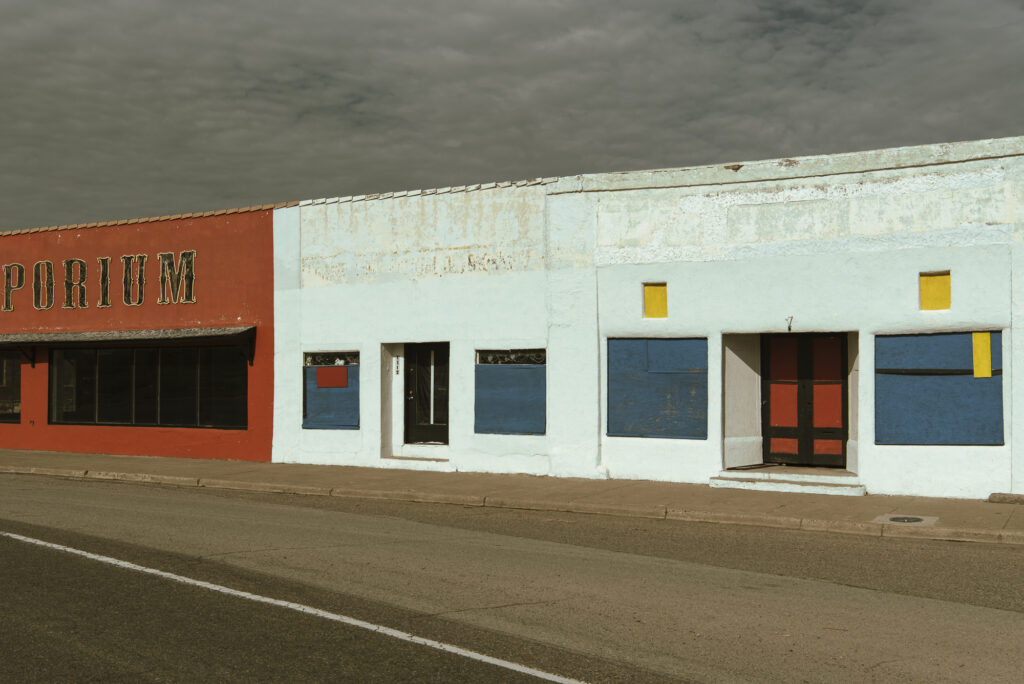
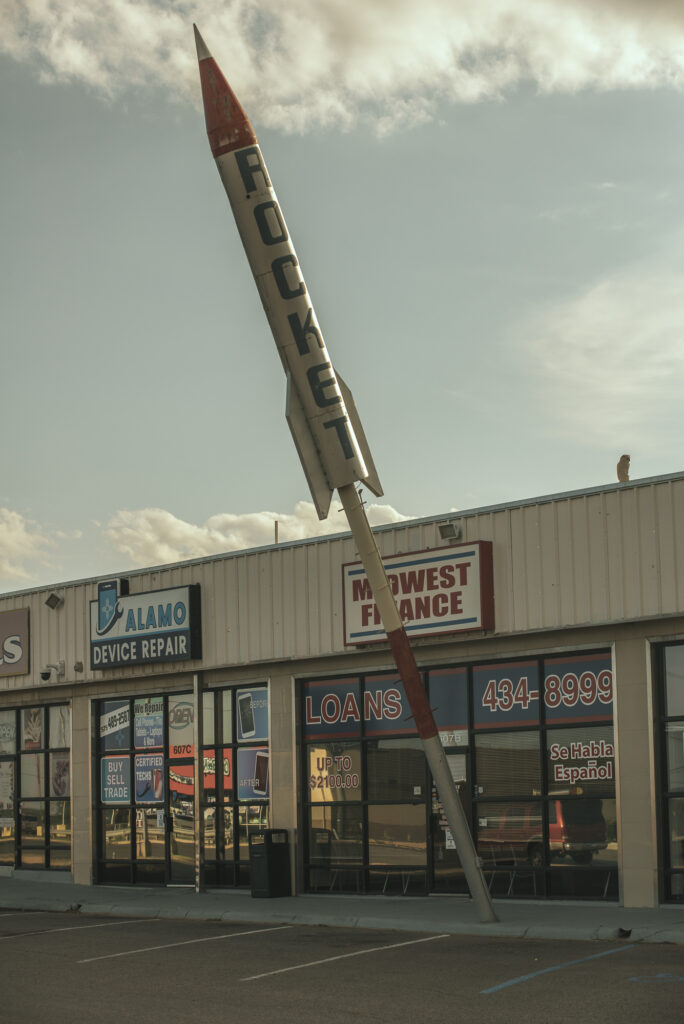
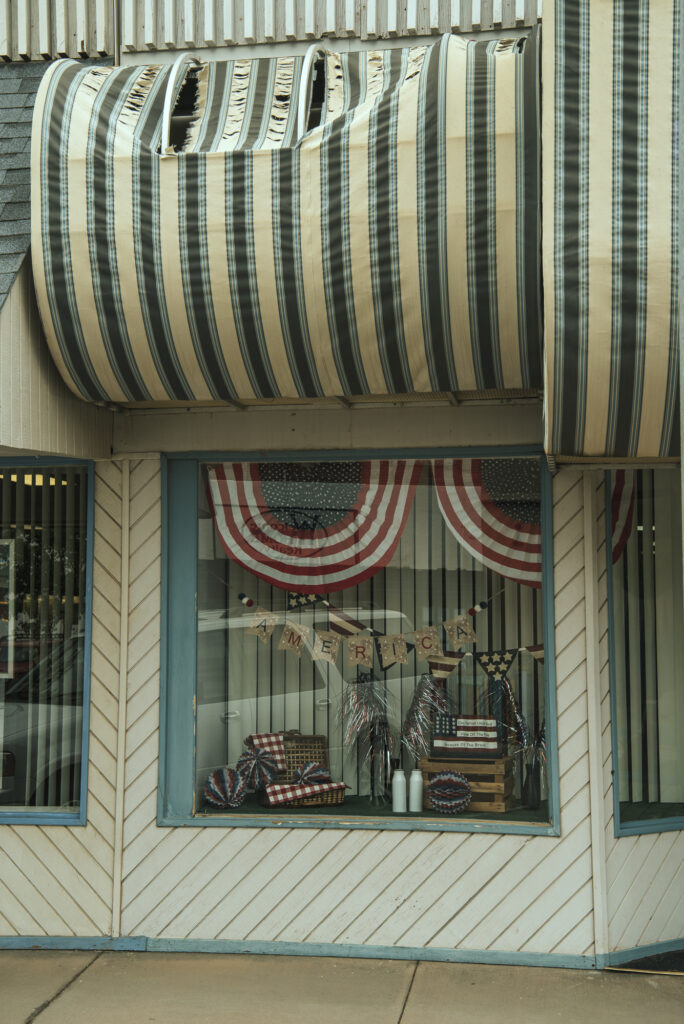
Storefronts in Carrizozo (top) and Alamogordo, New Mexico.
The reactions of Manhattan Project observers at the Trinity site are well documented. “Words haven’t been invented to describe it,” physicist Val Fitch said of the enormous fireball. General Thomas Farrell said the awesome roar “warned of doomsday and made us feel that we puny things were blasphemous.” “A few people laughed, a few people cried,” Oppenheimer recalled years later. “I remembered a line from the Hindu scripture . . . Now I am become Death, the destroyer of worlds.” Physicist Kenneth Bainbridge said, “Now we are all sons of bitches.”
Less documented are the reactions of the many New Mexicans who lived near Trinity. They had no warning, no context for the star-level explosion that shook their homes and startled them awake that morning. Worse, in the weeks after the test, they were never advised that their land, crops, livestock, and water may have been irradiated. A 2010 report to the CDC used archives at Los Alamos National Laboratory to re-examine the extent to which New Mexicans were unknowingly exposed to radioactive contamination from Trinity. Its findings revealed a shambolic and sometimes cynical effort to track the Gadget’s fallout that windy morning using “crude” and “ineffective” measures. Spotlights were deployed to try to follow the 230 tons of sand and ash falling from the mushroom cloud as it dispersed over southern New Mexico. Film badges designed to detect and measure radiation had been sent to nearby post offices before the test, but because of the Manhattan Project’s secret nature, there was little explanation on how the badges were meant to be used or why, and so they were deployed incorrectly or not at all.
Some soldiers assigned to chase and monitor the radioactive cloud couldn’t relay their findings to headquarters in Albuquerque because they were not equipped with long-distance radios; other monitors attempted to gather fallout samples with domestic Filter Queen brand vacuum cleaners. (These samples were later lost or destroyed.) At least one monitor left the area after his superior declared tracking fallout a “waste of time,” while another soldier misplaced his respirator and took the official but scientifically misguided precaution of breathing through a slice of bread.
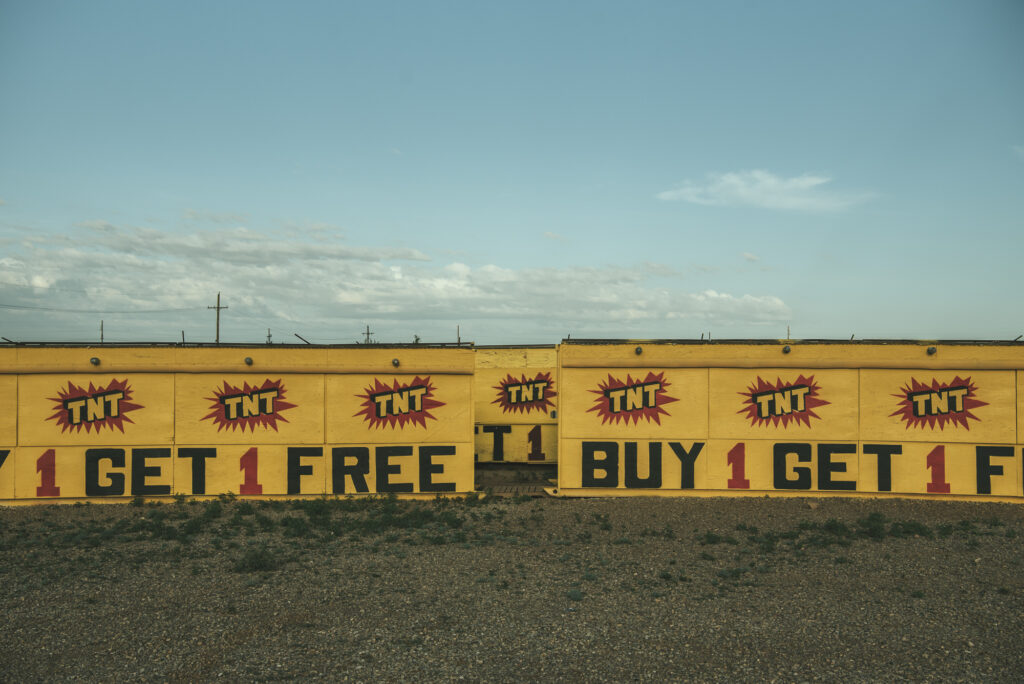
In any case, the preparations for fallout monitoring appear to have been as much about defending against possible litigation as protecting the health of anyone who might have been affected. A recent article in Nuclear Technology reports the instruction for monitors was to “keep as complete notes as possible in your own handwriting. . . . These notes can be written up more fully at a later date but in any court proceeding it is necessary to have your original data.”
But data about the aftermath of Trinity remains scarce. “No one really wanted to pursue the radiation possibilities for fear of getting involved in litigation,” said chief Manhattan Project medical advisor Stafford Warren in an interview with Lansing Lamont for his book Day of Trinity.
“The army and government lawyers,” Warren said, “wanted to put it all out of sight and mind as quickly as possible.”
In the hours after the explosion, when areas of high radioactive fallout were discovered at a ranch just 12 miles from Trinity, one doctor in charge of safety, Louis Hemplemann, decided against evacuation, likely in part because of constant pressure to maintain secrecy coming from Leslie Groves, the army general in charge of the Manhattan Project.
“Groves did not seem concerned about safety,” says James L. Nolan Jr., a professor of sociology at Williams College and the author of Atomic Doctors: Conscience and Complicity at the Dawn of the Nuclear Age. He knows about Groves’ attitude toward safety in part because his grandfather, James F. Nolan, experienced it firsthand.
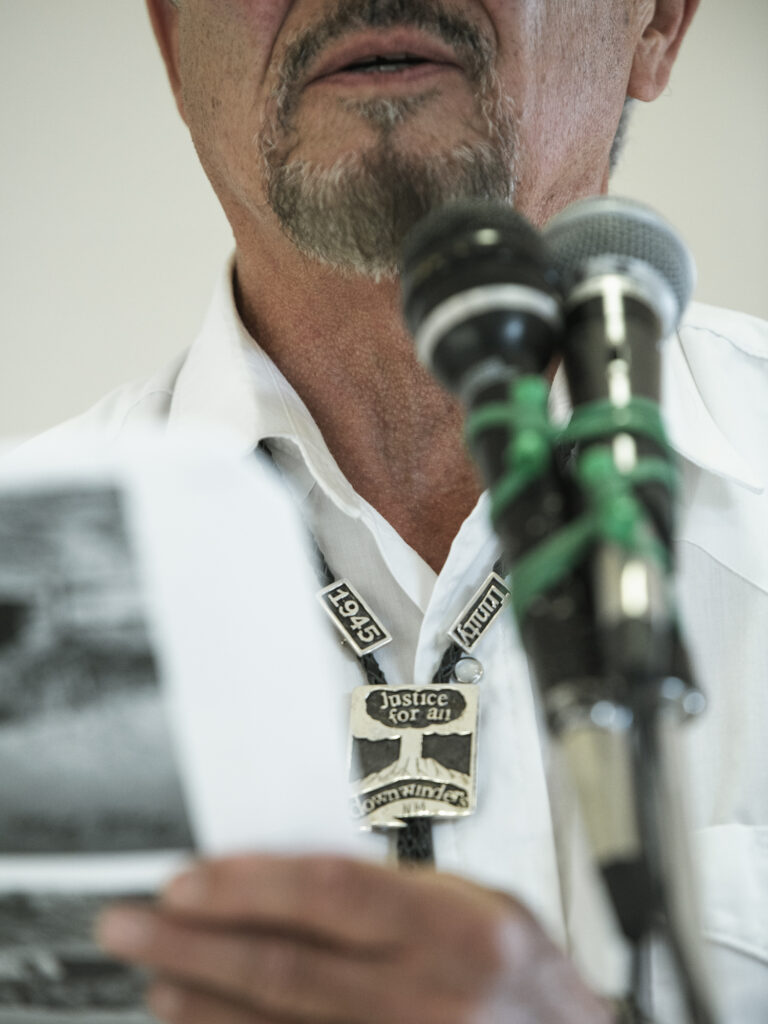
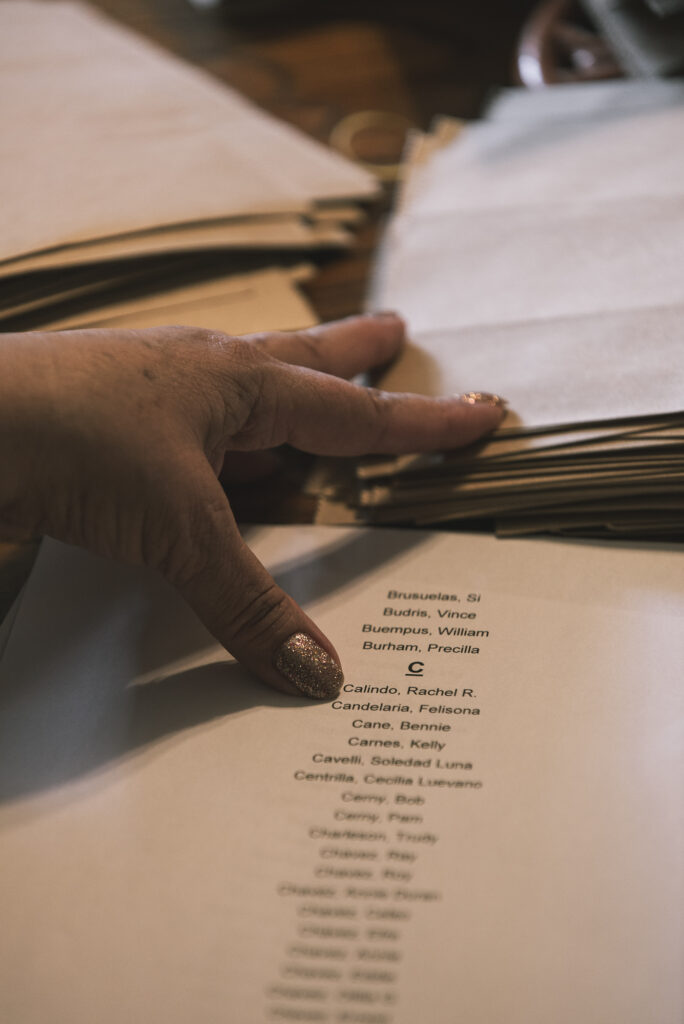
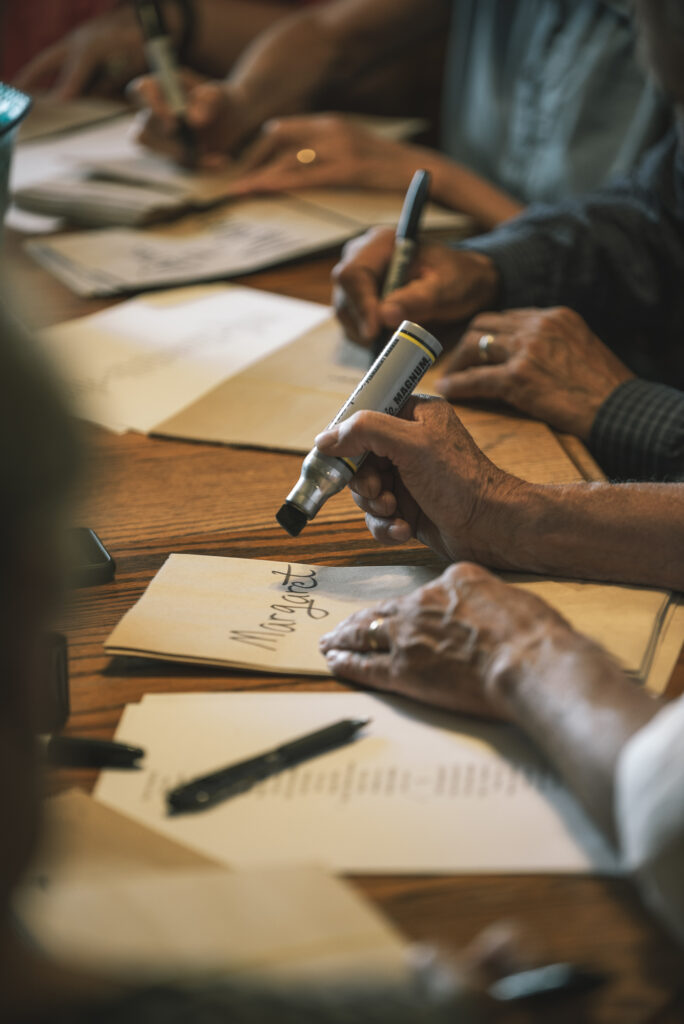
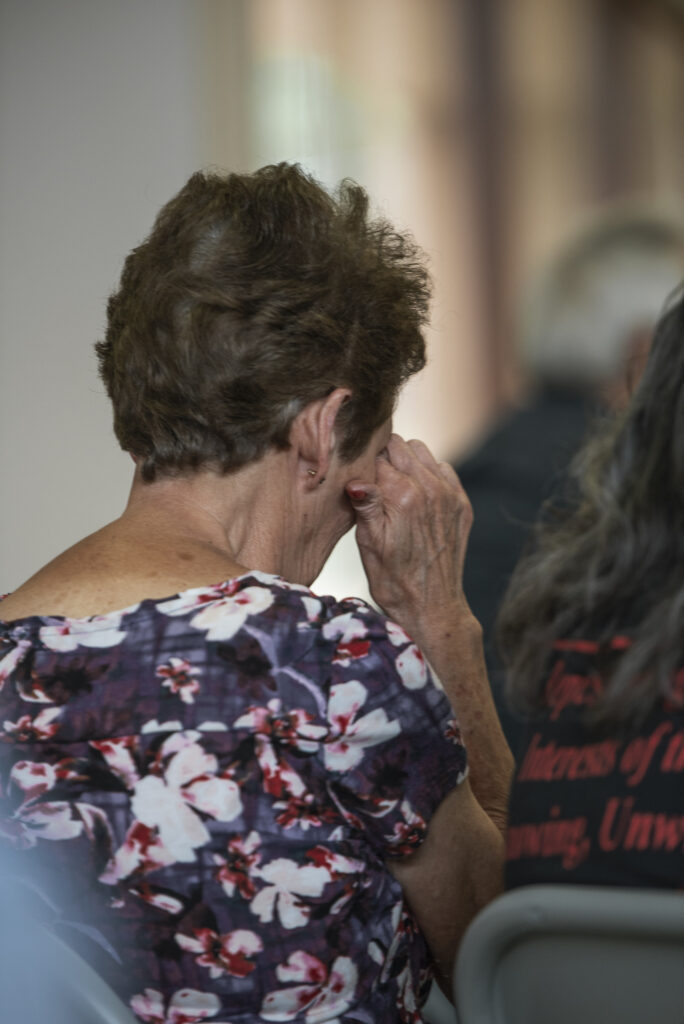
Scenes from a town hall meeting in Tularosa, New Mexico, organized by the Tularosa Basin Downwinders Consortium, July 2021.
The elder Nolan worked for the Manhattan Project and, one month before the Trinity test, he presented Groves with a report outlining the dangers of radioactive fallout as well as detailed safety measures that might be taken, including plans for extensive evacuations. Groves dismissed the report, saying, “What are you, some kind of Hearst propagandist?”
“If there was a chance to minimize consequences, that was one,” says Nolan Jr. But his book—a damning account of American missteps told through the lens of his grandfather’s work on numerous atomic weapons operations—details doctors’ consistent efforts to mitigate civilian exposure to fallout that were consistently ignored or diluted.
Atomic Doctors reveals that many in the Manhattan Project were ultimately clear-eyed about their mistakes, if not quite apologetic. Hemplemann, for instance, stated after Trinity that, given the known dangers of fallout, the pressure of secrecy, and the rush to have a working bomb in time for President Harry Truman’s July 17, 1945, meeting with Winston Churchill and Joseph Stalin, “We really shouldn’t have done the test.” He later wrote in his memoirs, “A few people were probably overexposed, but they couldn’t prove it and we couldn’t prove it, so we just assumed we got away with it.”
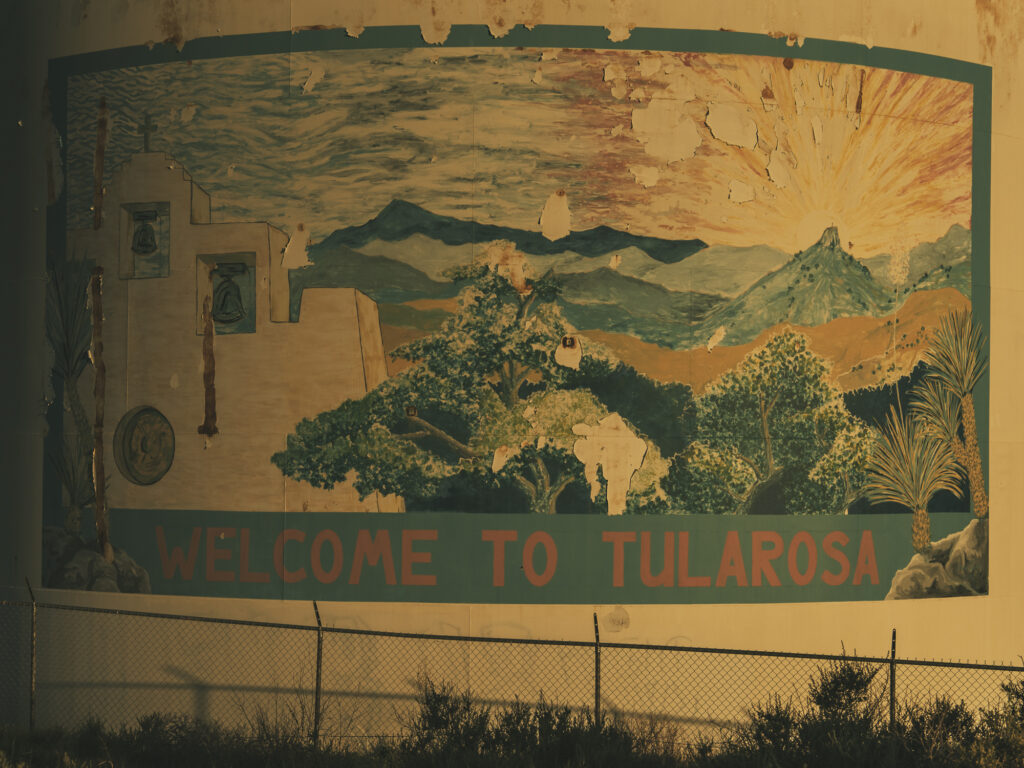
The 1940 census recorded 121 people living within 20 miles of Trinity. At 50 miles, there were more than 13,000 people, including all the residents of the villages of Carrizozo and Tularosa, much of the city of Alamogordo, and parts of the Mescalero Apache Reservation. The larger cities of Albuquerque to the north and El Paso to the south were each less than 200 miles away.
Radiation monitors tracked the Gadget’s fallout so far from ground zero that Stafford Warren recommended future nuclear weapons tests should maintain a minimum 150-mile radius without population. (While future test sites in Nevada and Utah were established further from populated regions, they never adhered to this recommendation. For instance, Las Vegas is only 100 miles from the Nevada Test Site. Both Nevada and Utah have well-documented histories of communities near test sites suffering from fallout-linked illnesses.)
When the evening of the Trinity test brought heavy rains, doctors noted the threat to nearby ranchers: “some of the activity [fallout] was carried into their drinking water and may have been drunk on the following day and thereafter.”
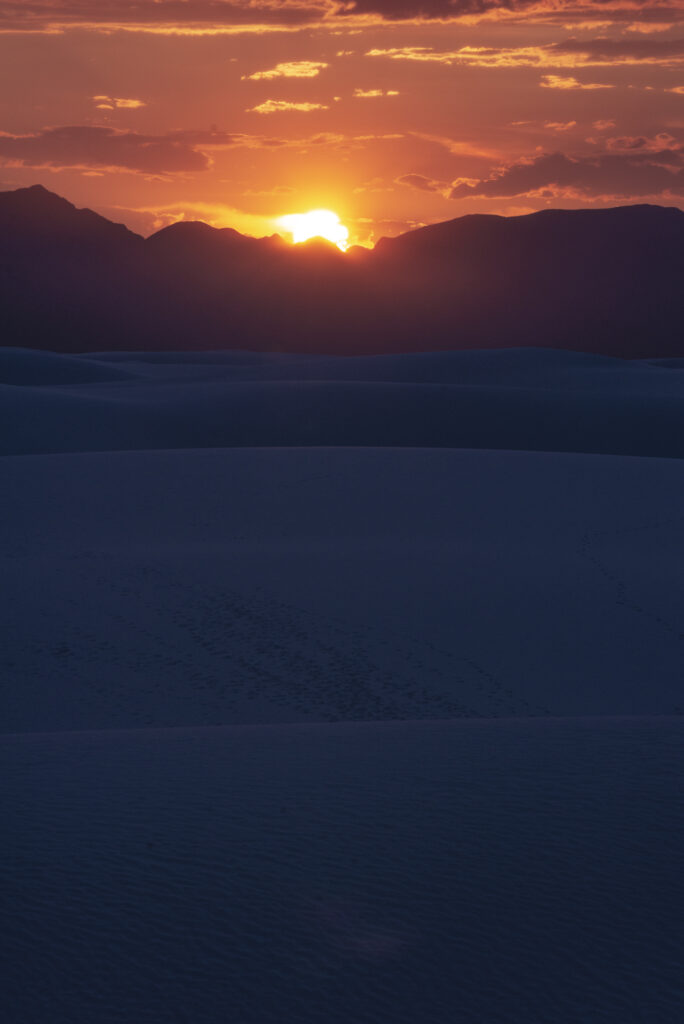
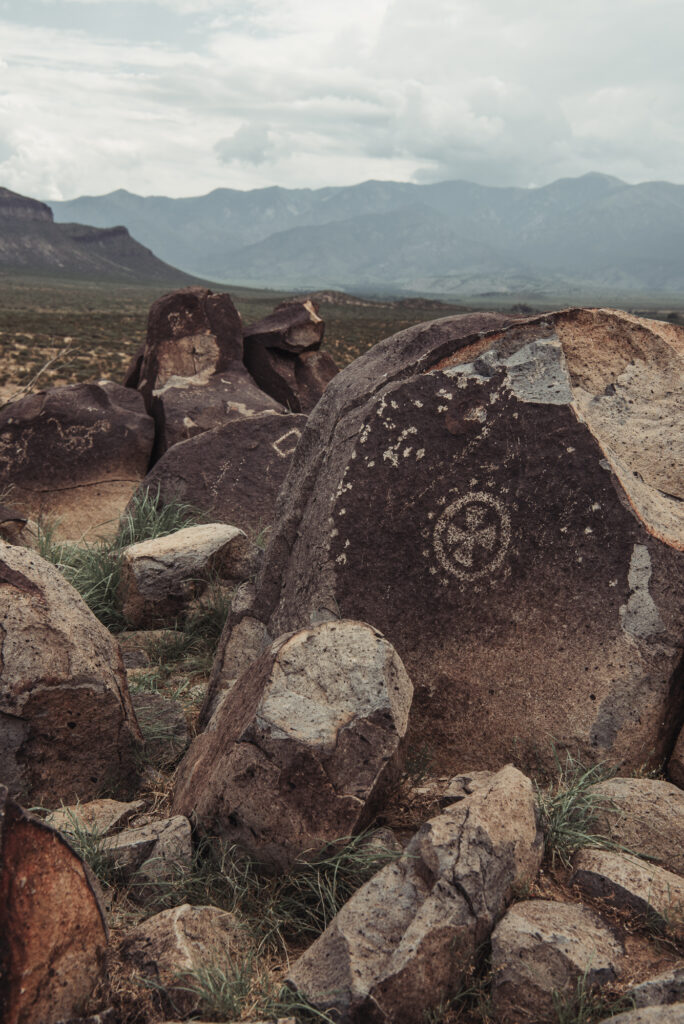
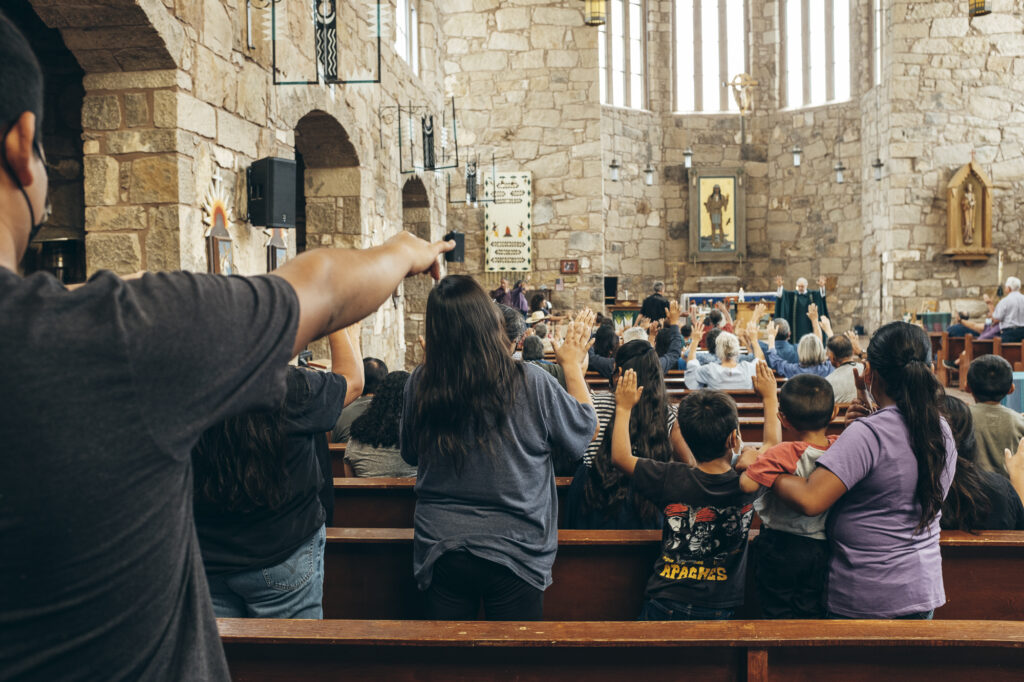
Ingestion of radioactive plutonium was of concern for the Manhattan Project since at least 1944, when a chemist accidently swallowed some while performing an experiment known as “tickling the dragon’s tail.” That incident led Oppenheimer to approve human experimentation in hopes of measuring the dangers of plutonium ingestion. One month before they incinerated rats with radioactive TNT and three months before the Trinity test, Manhattan Project doctors began secretly injecting hospital patients with plutonium in a horrific program of unwitting radiation exposure that would last until 1947.
In 1995 President Bill Clinton apologized for the plutonium injection experiments, saying they “failed both the test of our national values and the test of humanity. . . . Americans were kept in the dark about the effects of what was being done to them . . . not for a compelling reason of national security but for the simple fear of embarrassment, and that was wrong.”
Since 1990, the government has sought to address some of these early atomic-era failures of national values and humanity through the Radiation Exposure Compensation Act (RECA). This act allows for one-time payments of $50,000 to citizens exposed to atmospheric nuclear tests, known as downwinders, as well as $100,000 payments to uranium miners, mill workers, and other laborers in the nuclear weapons industry. But despite the country’s extensive nuclear weapons testing—more than 1,000 tests at over a dozen locations, from the Pacific Ocean to the Atlantic Ocean, from Alaska to Mississippi—RECA has been limited to downwinders with radiation-linked illnesses in only a handful of counties in Nevada, Arizona, and Utah. And one year from now, in June 2024, RECA is set to expire permanently.
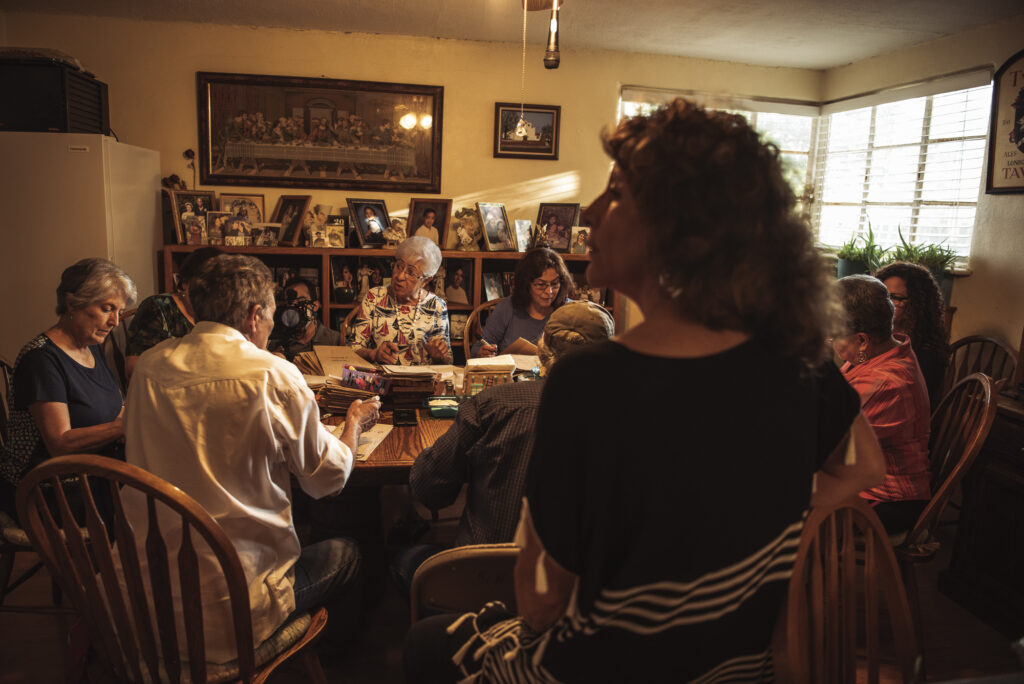
One group at the forefront of the fight to extend and expand RECA is the Trinity downwinders in New Mexico. Despite being the first people in the world exposed to radioactive fallout, they’ve never been eligible for compensation, and they’ve never gotten a clear answer why. Many interpret their exclusion as an extension of the secrecy and obfuscation that surrounded the Manhattan Project from the beginning. And so, for decades the New Mexicans who lived closest to Trinity have tried to change the narrative of the Manhattan Project to include stories of the poor, Hispanic, and Native American communities that were exposed to the Gadget’s fallout on July 16, 1945. With all the hype surrounding a star-studded film about Trinity this summer, these folks worry their struggles may once again be overshadowed.
“The Manhattan Project was an invasion of our land and lives,” says Tina Cordova, whose family lived in Tularosa just 50 miles from Trinity in 1945. “And the film feels like that too. Without all the Hispanic and Native people . . . Los Alamos doesn’t exist . . . the Manhattan Project doesn’t happen . . . but we don’t think they’ll ever tell that story.”
These rural communities, like the one in Tularosa where Cordova’s family lived, generally had no electricity or running water in 1945. They drank from open cisterns that collected rainwater. If they had a well, its water was brought by windmills to surface holding ponds in the open air. They grew much of the food they ate. They raised their own livestock for meat and milk.
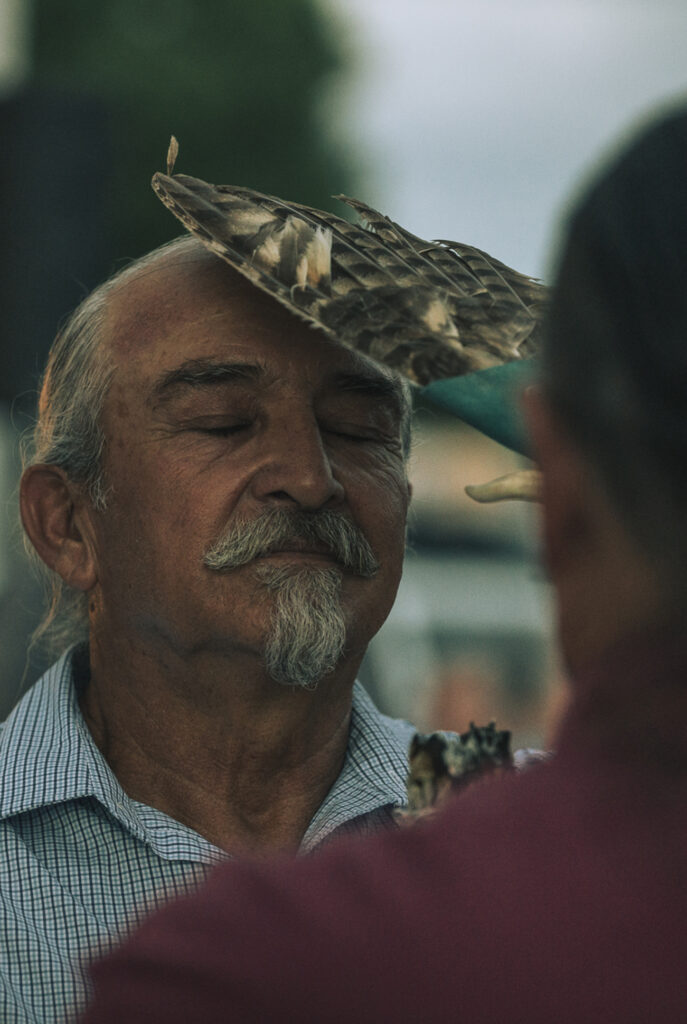
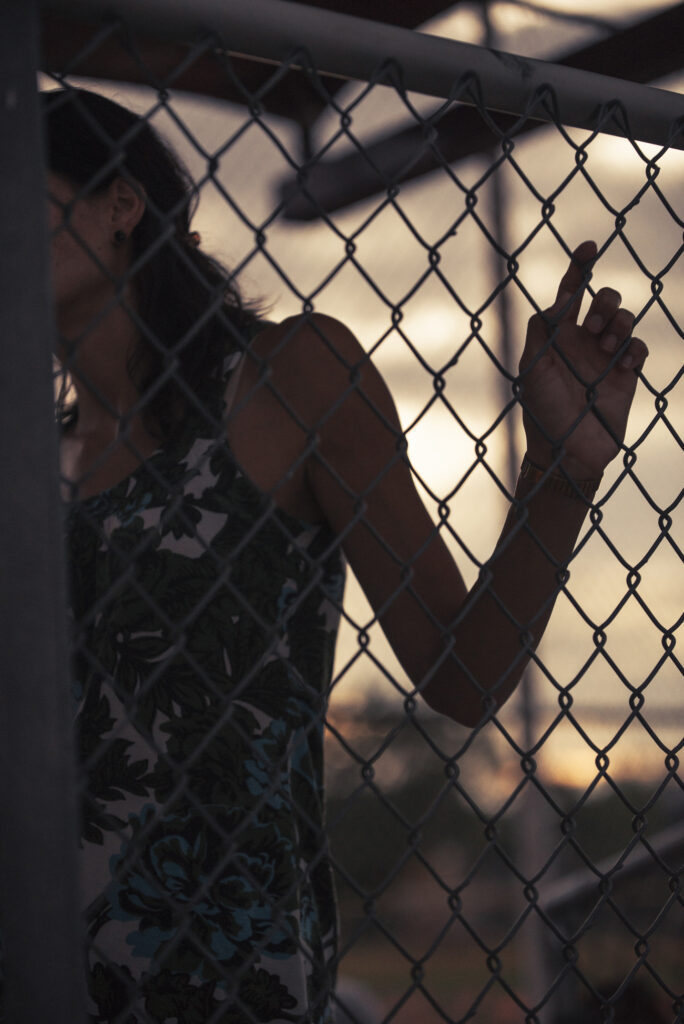
Attendees at the Tularosa Basin Downwinders Consortium’s 2021 candlelight vigil.
The massive explosion that rocked their homes, filled the horizon with a mushroom cloud, and covered their land in “ashy snow” was dismissed in press releases the next day as nothing more than a small detonation at the munitions dump. There were no warnings issued. Despite the storm having scattered fallout unpredictably and the detection of excessive radiation in numerous communities, no evacuations were ordered. And so these families went on drinking from their irradiated cisterns, using water from their irradiated ponds and ditches for cooking and cleaning, and eating their irradiated crops and livestock because their government assured them there was no danger.
It was only three weeks later, after the bombing of Hiroshima on August 6, that the explosion in New Mexico was revealed to be an atomic bomb. But even then, the army publicly maintained for long afterward that any fears of radiation sickness from nuclear weapons were only “enemy propaganda.”
The pressure to remain quiet about radiation exposure is a tradition in New Mexico. The state’s economy has long benefited from the nuclear weapons industrial complex, as it is the only state with a so-called “cradle-to-grave” industry where uranium is mined, weapons developed, and waste stored. In 2003 Democracy Now reported that “if New Mexico seceded it would be the third biggest nuclear power in the world.” Others have described the proliferation of nuclear weapons in one of the poorest states in the nation, with one of the highest populations of Indigenous and Hispanic residents, as “nuclear colonialism.”
Now, 78 years after the atomic age began, the last living witnesses of the world’s first radioactive fallout are those who were, at the time of the test, the youngest and most vulnerable. They’ve spent decades calculating the ravages of cancer in their communities. At a recent downwinders memorial in Tularosa, a village of 2,641 where 65% are Hispanic and the median income is $25,000 less than the national average, more than 700 luminarias were lit in remembrance of cancer victims from the region.
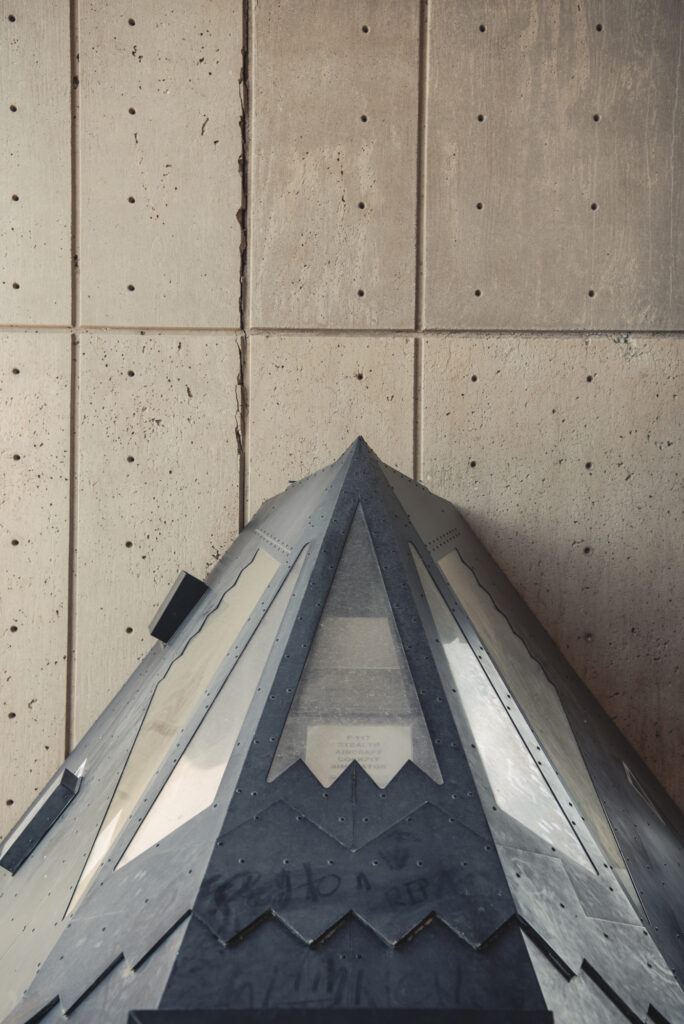
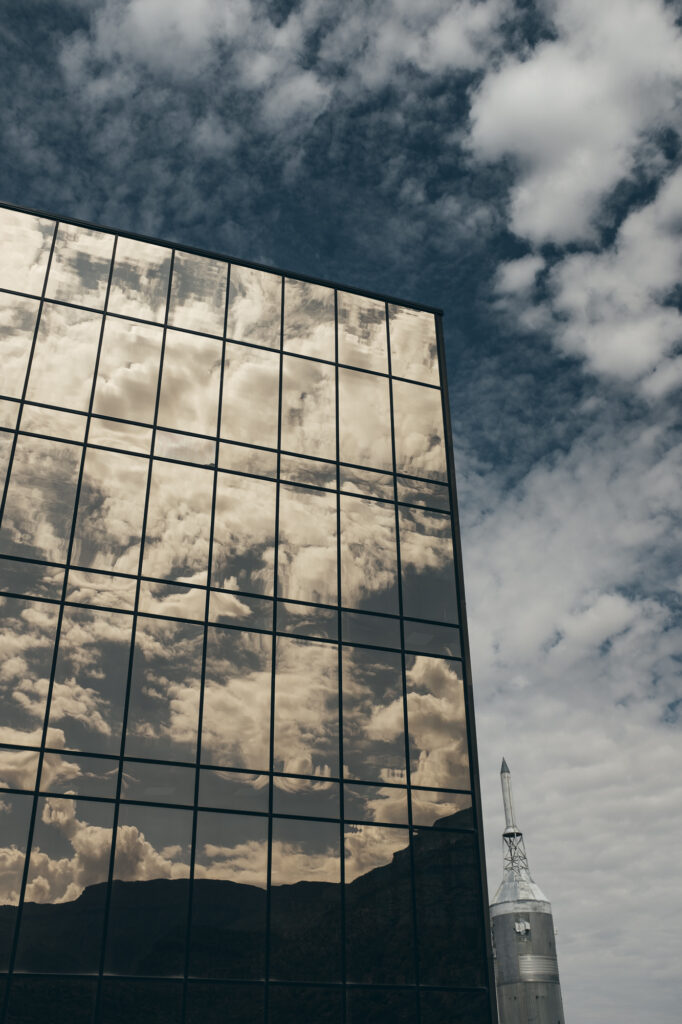
Right, Exterior of the New Mexico Museum of Space History in Alamogordo. After the Trinity test, southern New Mexico became the focus of U.S. rocket and weapons development and testing, including the F-117 Nighthawk stealth fighter (left).
A study by the National Cancer Institute published in 2020 concluded that “there is great uncertainty in the estimates of radiation doses and number of cancer cases possibly attributable to the [Trinity] test, thus no firm estimates can be established.” This even as a 2010 CDC study concluded that “exposure rates in public areas from the world’s first nuclear explosion were measured at 10,000 times higher than currently allowed.”
Conservatively, the United States has spent $6 trillion developing nuclear weapons. Since 1990, RECA has paid an estimated $2.5 billion to compensate people with illnesses linked to nuclear weapons development. This compensation amounts to less than 0.0005% of the nation’s total spending on nuclear weapons. And with funding for nuclear weapons growing, that number will effectively become zero when RECA ends next year.
The downwinders of Trinity are just one of many groups of Americans who have been given no opportunity to seek redress for developing cancer and other chronic illnesses after exposure to their nation’s nuclear weapons industrial complex. In 2022, Senators Ben Ray Luján (D-NM) and Mike Crapo (R-ID), along with Congresswoman Teresa Leger Fernández (D-NM), introduced legislation to extend and expand RECA for communities such as Tina Cordova’s in Tularosa. The bill would have extended compensation to communities downwind of atmospheric nuclear weapons tests in Colorado, Idaho, Montana, New Mexico, and Guam, as well as expanding the number of eligible uranium miners, such as the many Navajo who worked the mine on their tribe’s reservation in northern New Mexico. But the bill failed to move forward. This year the effort to amend RECA seems to have fractured, with legislators from three different states sponsoring three different bills, none of them as inclusive or expansive as the previous efforts.
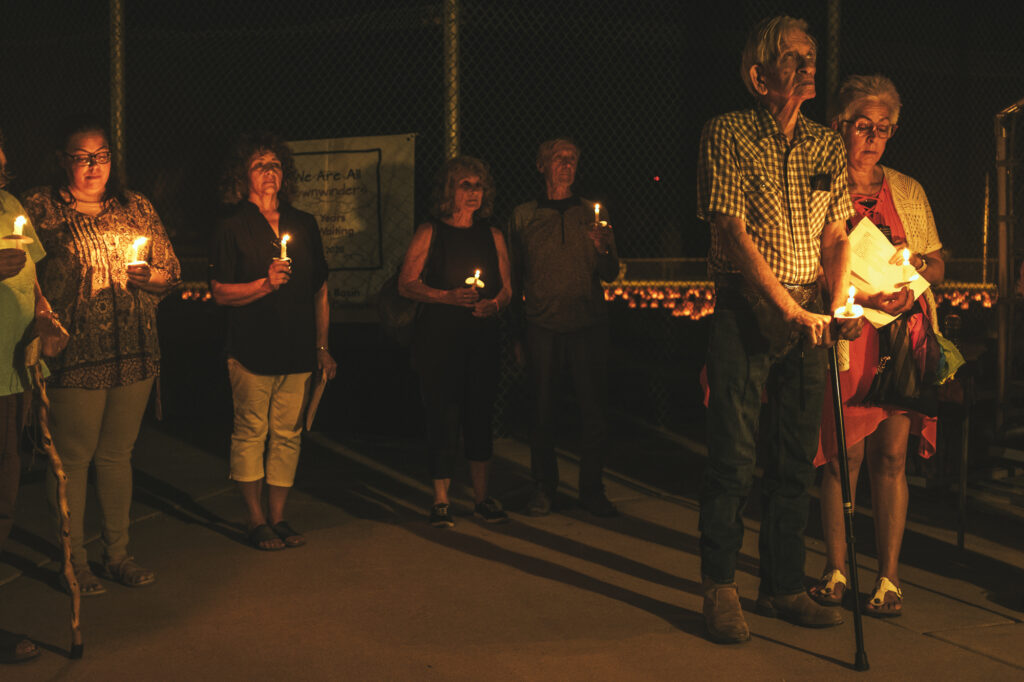
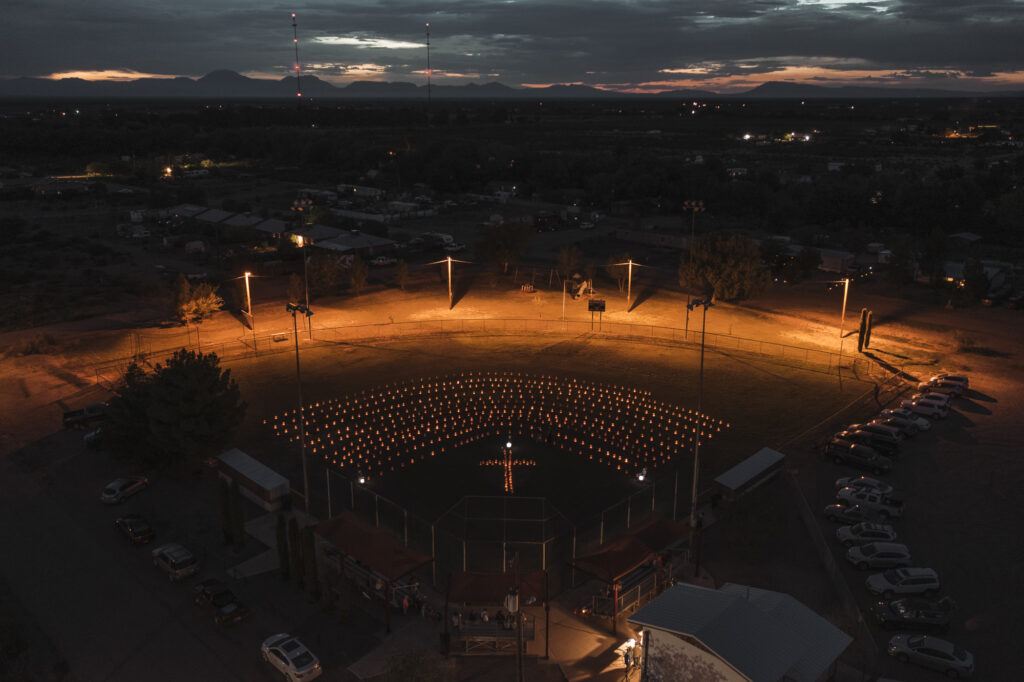
Cordova, who has testified before Congress on this issue, is concerned the new efforts may fail. “Here we are again,” she says, “this never-ending cycle of introduce bills, ignore them . . . and people continue to die and get sick in all of our communities.”
“Countless Americans continue to battle cancer and other diseases caused by this exposure, yet too many receive no compensation from the government for the harmful effects,” Leger Fernández wrote to me in a statement last year. “In New Mexico, where the Trinity Test occurred, downwinders are not eligible for assistance. The current law also senselessly leaves out post-71 uranium miners [who began working after 1971]. We must expand the law to ensure that all those affected can receive fair compensation.”
The downwinders in New Mexico have sometimes described themselves as “lab rats,” invoking notions of those actual rats lost or vaporized in the rehearsal for the Trinity test. It’s reminiscent of another moment from American Prometheus, one that lacks the explosive action typical of a summer blockbuster but nonetheless encapsulates something important about the true nature of Trinity. It was 1961 and Oppenheimer was on vacation. He watched his friend catch a turtle on the beach. But when his friend wanted to cook the turtle, Oppenheimer objected. “Wincing, Robert pleaded for the turtle’s life, telling everyone that it ‘brought back to him the horrible memories of what happened to all the little creatures after the [Trinity] test in New Mexico.’ ”
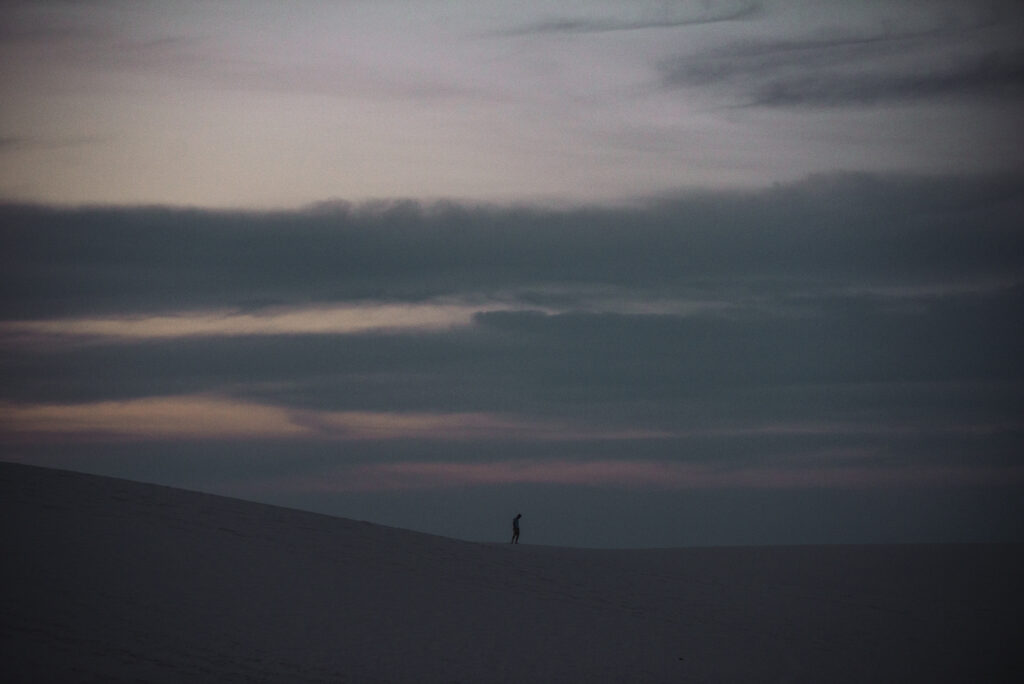
I first began speaking with the downwinders of Trinity in 2015, while researching my book Acid West. But I was raised in Alamogordo, just 60 miles south of the Trinity site, and in that way I had been speaking with downwinders much of my life—I just didn’t know it. Like many in the region, my experience of the Gadget was limited to the dramatic stories of scientists or mutants that I encountered in movies and comic books. Also there were the tours the army conducts at the Trinity site in October and April of every year, allowing visitors to traipse around a small monument they’ve installed at ground zero. But the monument commemorates only the bomb. There is nothing to commemorate the bomb’s victims, American or Japanese. And the place really does feel isolated now. Eventually the government claimed 3,200 square miles around the Trinity site and fenced it off, creating the nation’s largest overland military range. The only trace of the people who once lived in the area is the McDonald House. The McDonalds were one of the families evicted before Trinity. Their house, largely unchanged, became the place in which the Gadget was assembled. It makes for a compelling scene in all the stories, the scientists and soldiers moving frantically around a modest ranch house as they build a bomb that will change the world. You can still walk in that house. You can duck in the short door and touch the adobe walls and see the wear in the floor where the chairs were scooted up to the dinner table each night. You can go to the Trinity site and, despite all the stories you’ve heard, you can stand in that house and know there were people there.
And if you do go, you’ll likely see Tina Cordova there, at the gate, gathering with other downwinders at the edge of the missile range, holding protest signs, handing out educational pamphlets. They are not protesting the bomb itself, or the military, but protesting the fact that their stories have not been heard, that their suffering has never been acknowledged, that even though you won’t see them on the big screen this summer, they were there.
Late in 2021, as the downwinders geared up for another term of lobbying Congress, as Christopher Nolan announced he would be filming Oppenheimer in New Mexico, I returned with the photographer Reto Sterchi to another of the downwinders’ annual vigils. There’s an adage in journalism that it’s important to put a face to the story. This summer the story of Trinity will have the faces of many movie stars attached to it, all representing the faces of scientists and generals and politicians involved in the Manhattan Project. But there are other stories in the wake of that first blast of the atomic age. These are some of their faces and some of their stories, in their own words.
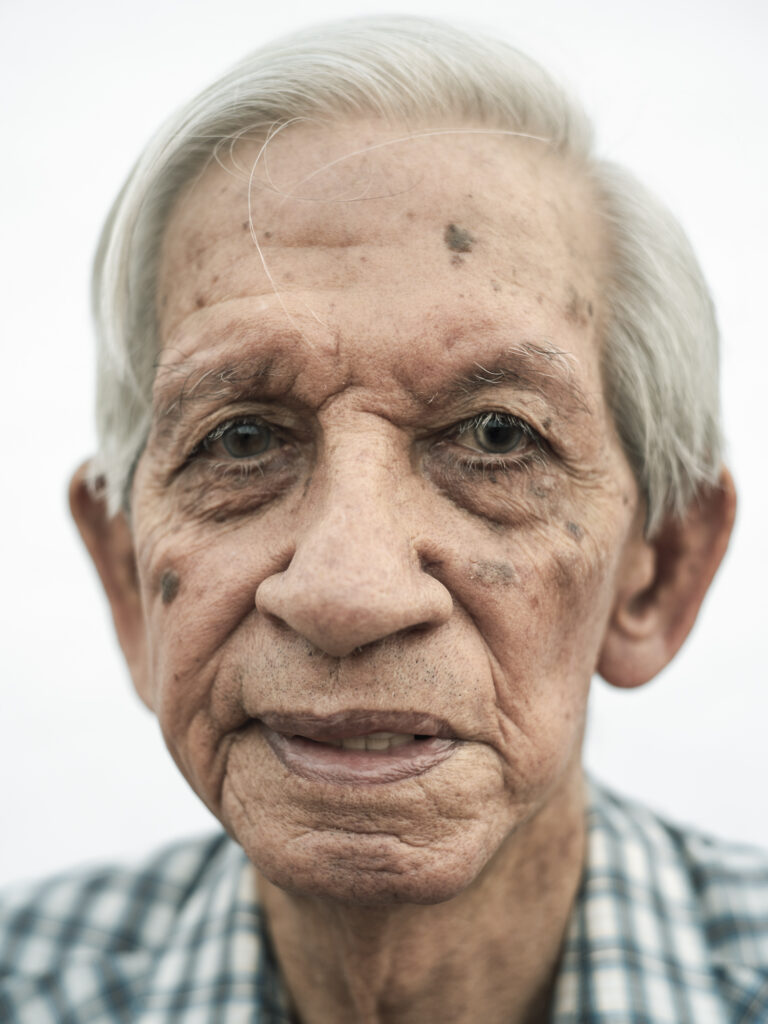
Henry Herrera
Henry was 11 years old and living in Tularosa when the bomb went off about 50 miles northwest of his home. He says he thought to himself, “The world is coming to an end.” He watched the cloud of fallout move toward the mountains to the northeast, and then the dark cloud shifted south and came back toward Tularosa. He told his mother, “Aquí viene la bola pa’trás.” (The ball is coming back.)
He remembers that the fallout “was on our roofs, our gardens, milk cows, rabbits, pigs, turkeys, and chickens . . . all we had was rainwater from the cistern and ditch water. All the debris from our roof was in our cistern after the first rainfall.”
Henry first got cancer of the salivary gland. The radiation treatment caused osteoradionecrosis and damage to his carotid artery. His brother died of cancer. Both of his sisters are cancer survivors. Henry died in January 2022.
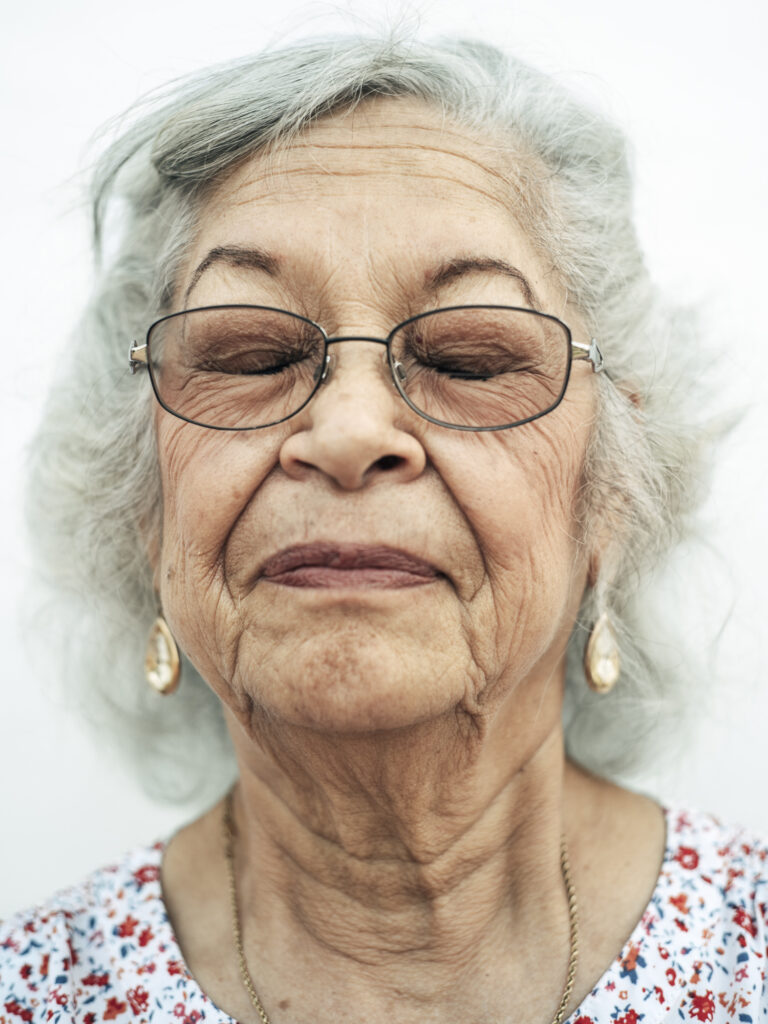
Irene Kowatch
Irene is Henry Herrera’s younger sister and was eight years old when the bomb went off. She doesn’t remember seeing the blast like Henry did. She figures she was probably asleep. But she remembers waking up to much shaking and things falling down. “I thought it was the whole world coming down,” she says.
Irene and Henry were two of eight children in their family at the time of the Trinity test. Four of the siblings eventually developed cancer. Irene also lost her husband after bouts with skin cancer, prostate cancer, and lymphoma. Though he was not raised in Tularosa, he was in the military there, and she worries his frequent work near the Trinity site contributed to his death.
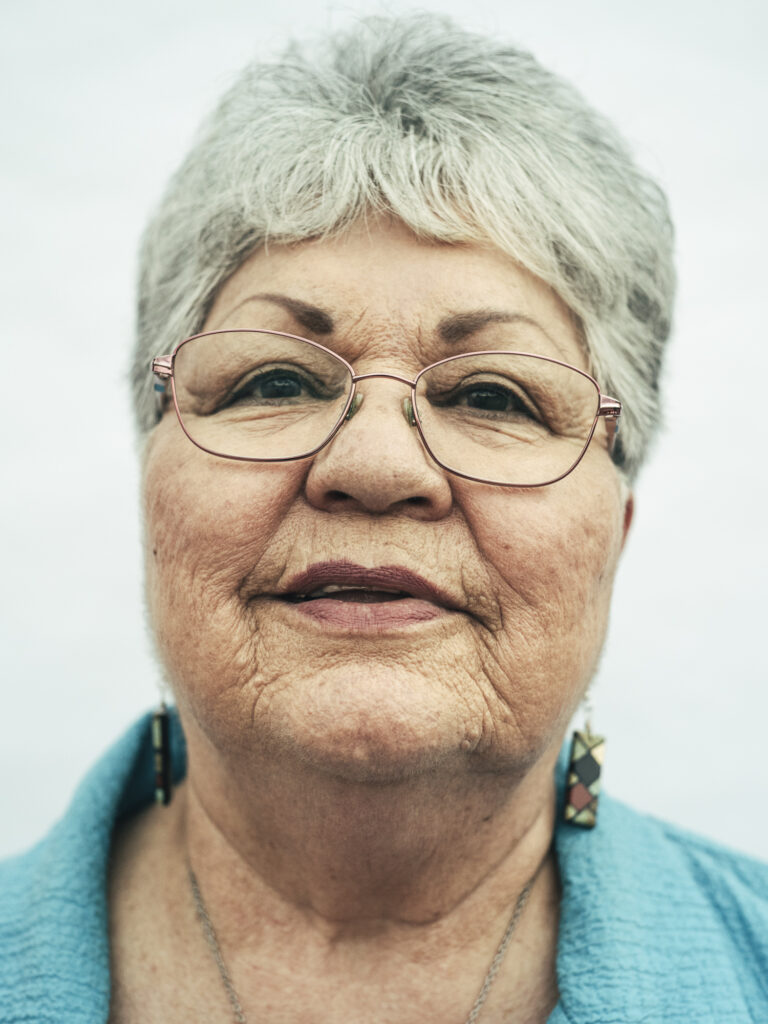
Bernice Gutierrez
Bernice was only eight days old when the bomb went off less than 40 miles west from her home in Carrizozo. “I never heard a thing about the test,” she says. “I knew the bomb had been tested there, but my family did not talk about it.”
Her mother and brother were diagnosed with thyroid cancer in the 1990s. Her endocrinologist asked if her family had ever been exposed to radiation. Exposure to fallout from nuclear weapons is a proven risk factor for thyroid cancer and a common diagnosis after such exposure. Bernice’s daughter also eventually developed thyroid cancer. On the advice of her doctor, Bernice had her thyroid gland removed in 2012.
In hopes of becoming eligible for RECA, Bernice set about researching her family’s sickness from exposure to fallout. Her mother was one of 11 children, all born or raised in Carrizozo, 40 miles from the Trinity site. Each of those 11 siblings who had children have had at least one child diagnosed with cancer or brain tumors. In all, 20 members of her family from the area had different cancers, and six died from the illnesses. Twelve family members have had noncancerous radiation-related sickness such as thyroid disease. She says the research into her family’s medical problems is time-consuming and traumatic. “It’s almost like a full-time job fighting this battle. We’ve been totally ignored. Overlooked.”
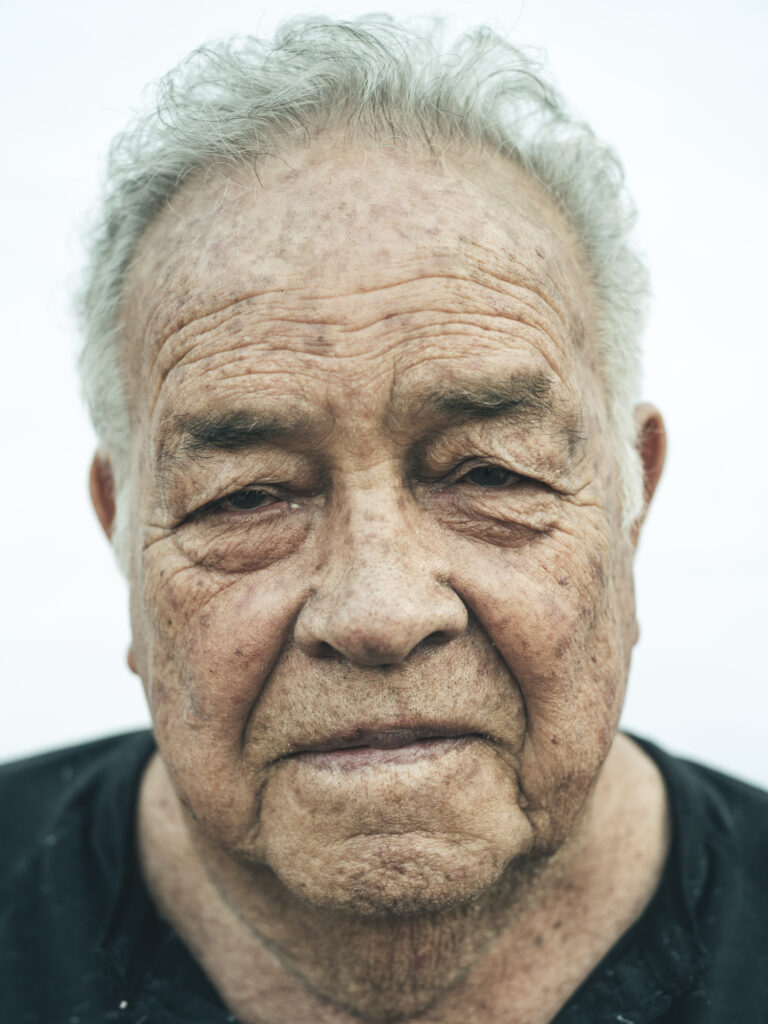
Raymond Najar
Raymond was seven years old at the time of the bomb test. He was living about 40 miles from the blast in the town of Carrizozo. “Looked like the sky was painted yellow,” he says of seeing the explosion. “We was out in the yard that morning. . . . There was all kinds of people milling around out there. I just remember the air and sky was yellow. Like somebody poured a bucket of yellow paint in front of me.”
He remembers how they would get milk a few times a week from their neighbor. He brought it over in an open bucket. “Everything was like that,” he says, referring to consumption of local agriculture that would likely have been tainted by fallout. “We carried water from the railroad’s roundhouse where they had an open reservoir. This was before plumbing. I carried two little buckets nearly every day.”
Eventually Raymond’s mother and all of his siblings developed thyroid problems. His mother had cancer, and Raymond is himself a cancer survivor. His wife, raised in nearby Tularosa, has lost her father and brother to lung and stomach cancer they believe is related to the fallout from Trinity.
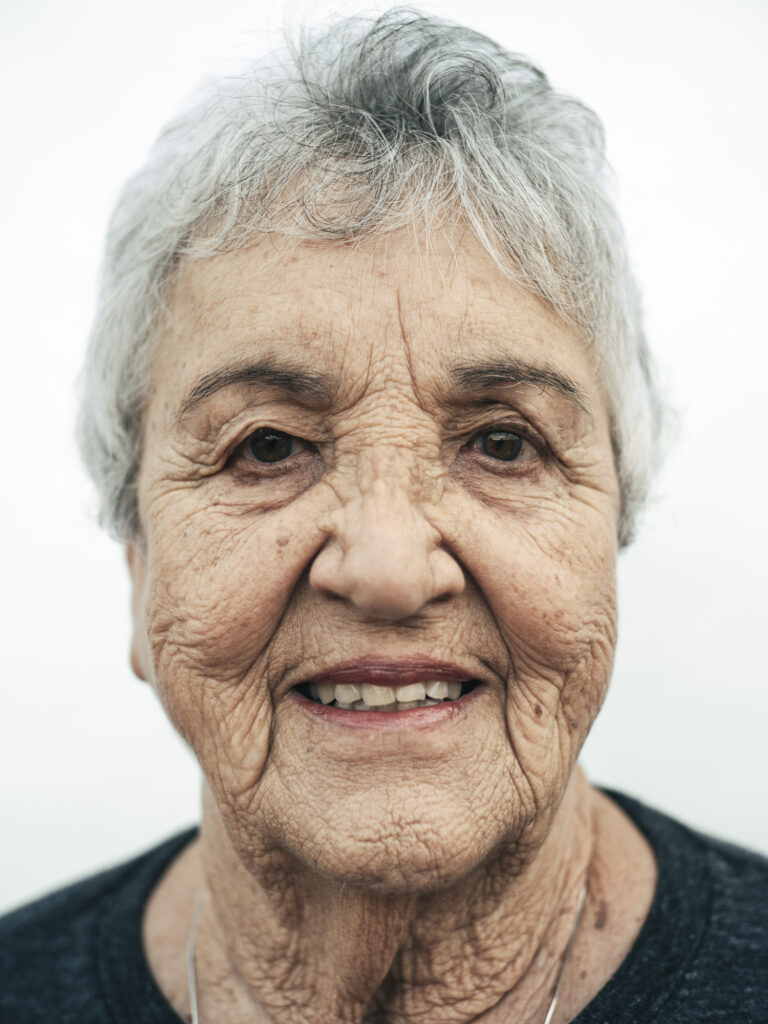
Nora Follz
Nora was one day shy of two years old when the bomb went off about 50 miles west of her home in Nogal Canyon. She was one of four children at the time. Her father worked at Holloman Air Force Base. He brought home some groceries from his job at the commissary, but most of their produce came from a big garden they kept. “No telling what the vegetables had . . . after the ash and all that from the bomb.”
In 1950 her family moved to Tularosa, where her brother died from leukemia at the age of five. But at that time, she says, they didn’t think to connect an illness to the fallout because no one told them about radiation. “My oldest sister, Helen, was diagnosed with kidney cancer maybe 30 years ago. Another sister, Arcenia, died of multiple myeloma in 2006. Another sister, Virginia, was diagnosed with colon cancer about 15 years ago and then had breast cancer several years later.”
All this illness, she says, made them question what caused it. And then when the true story of the fallout from Trinity started to get publicized as the plight of downwinders became mainstream news in the 1980s, everything made sense. “I’ve been part of the protests at the Trinity site. People honk or boo. I don’t mind. I know they just don’t understand. They’ve been lied to. Like us.”
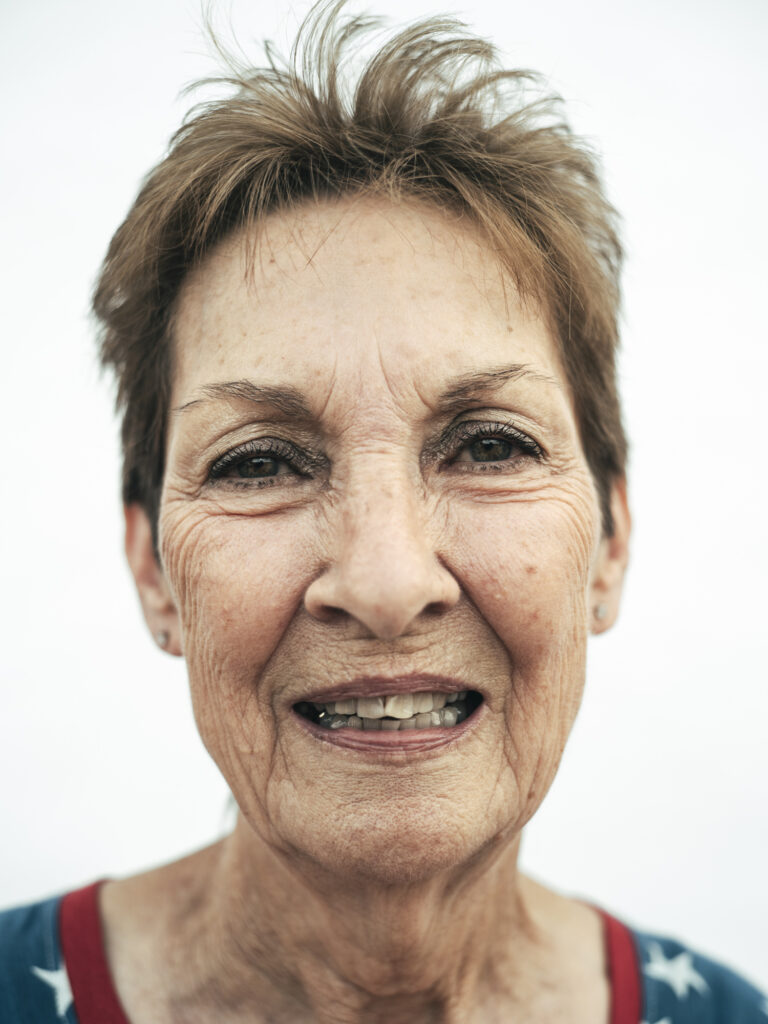
Rosemary Cordova
Rosemary was five months old when the bomb went off. Her family was living a few hundred miles from Trinity, in Pampa, Texas. She suggests this distance from the fallout is a reason she hasn’t been diagnosed with cancer, though she is on medication for her thyroid. “But,” Rosemary says, “cancer has plagued our family, and it is hard to remember each and every one of them.”
Her grandfather had a sheep ranch only 50 miles northeast of the Trinity site, in a village called White Oaks. Though he had passed away in 1945, many of his nine children, Rosemary’s aunts and uncles, still lived there at the time of the Trinity test. “Aunt Nellie died of stomach cancer. Aunt Lorena died of ovarian cancer. Uncle Juan Jay was diagnosed with breast cancer. Uncle George died in a prison camp in the Philippines during WWII . . . so that wasn’t the bomb, but we still lost him to the war.”
Rosemary’s own mother, who moved them back near the family ranch at White Oaks around 1949, was diagnosed with brain cancer in 1964 and died 16 months later. “Cancer is like this branch of the family tree that keeps branching out,” she says. “But it’s not only genetics, . . . everyone around here dies of cancer. After the bomb . . . nobody was warned, ‘Maybe don’t eat the vegetables. Maybe don’t drink the water.’ It just makes me sick to think that we were guinea pigs.”
Rosemary is still in Tularosa, where she lives with her son, who suffers from complications related to a brain tumor. “We are all doomed, us, our children, our grandchildren, and on, and on, and on. I pray that one day our government will do what should’ve been done long ago.”
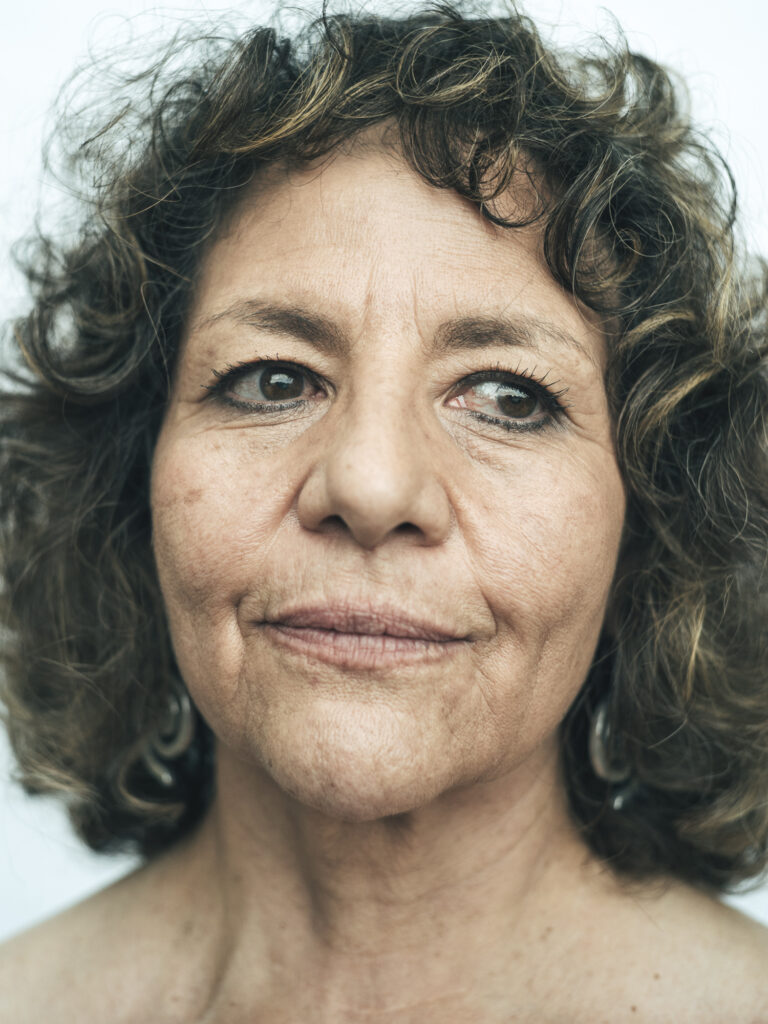
Tina Cordova
Tina’s father, Anastacio, was four years old when the bomb went off 40 miles from his home in Tularosa. After bouts with prostate and tongue cancer, he eventually died when the cancer spread to his neck at age 71. Tina’s mother, Rosalie, also battled mouth cancer.
Tina was diagnosed with thyroid cancer when she was 39. These illnesses and the nearly dozen other cancer diagnoses in her extended family living in Tularosa suggested they had suffered the same consequences from fallout as other Americans who lived near atomic weapons testing sites in Nevada and Utah. She founded the Tularosa Basin Downwinders Consortium with Fred Tyler in 2005. As a leader of this group, Tina has testified before Congress, spoken to countless classrooms and town halls, and been instrumental in changing the narrative around the fallout from the Trinity test. She’s now fighting to pass legislation to compensate victims of the nuclear weapons industry in New Mexico.
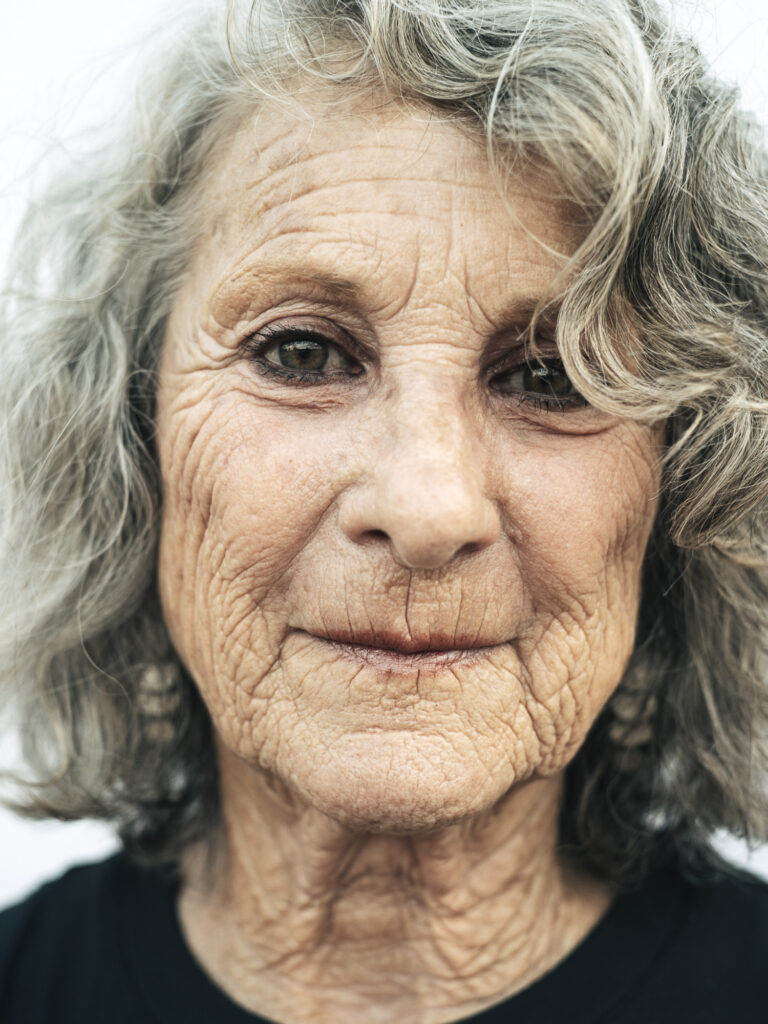
Jolene Dalton-Maes
Jolene was only two years old and living on the corner of Vermont Avenue and 16th Street in Alamogordo when the bomb went off. Alamogordo is 70 miles southeast of the Trinity site, but there was never much talk of fallout in the town. “It was a government town,” Jolene says. “Alamogordo and the Tularosa Basin were in the war long before the war,” she says, referring to the region’s history of military activity. She says the amount of money brought into the local economy by the military made it taboo for anyone in the area to criticize the bomb. In fact, the bomb was championed as the best thing that ever happened to Alamogordo when the city changed its nickname to “Atomic City.”
Though Jolene doesn’t remember much about the actual atom bomb test, she says her family certainly got produce from rural areas and all their milk from City Dairy, which serviced most of Alamogordo using cows from rural areas near Tularosa and Three Rivers, where substantial fallout was well documented.
“There was no [history of] cancer in my family,” Jolene says, “and then my mother was 50 when she was diagnosed with breast cancer. Eventually she died from it at age 70. I had breast cancer. Was diagnosed at 56. Been in remission for 21 years. My younger sister had a rare ovarian cancer and died of that. My daughter is type 1 diabetic. She was nine when she was diagnosed. I’m convinced that my exposure to radiation helped cause that.”
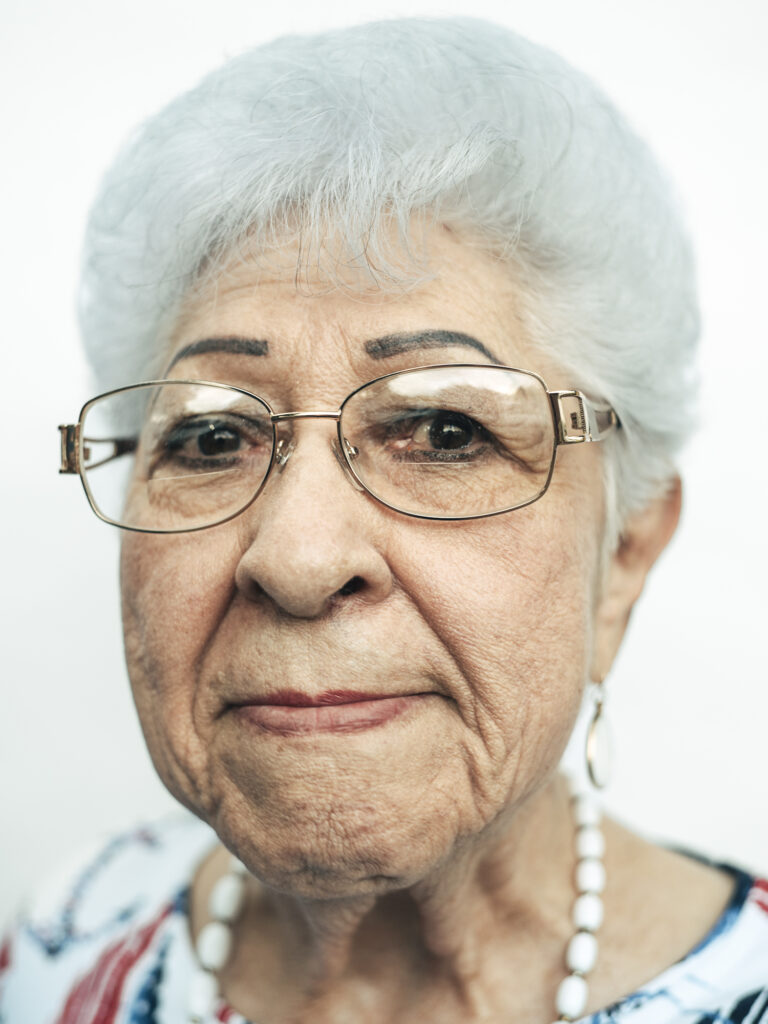
Stella Aguilar
Stella was 10 years old when the bomb exploded, living in the village of La Luz, 60 miles from the blast. Her father was off fighting the war, so it was just her mother caring for Stella and her three younger siblings. “The only thing I can remember is that . . . the house was shaking real funny. My mom jumped out of bed, and I followed her. We were looking out the kitchen window. The whole sky looked red. I thought it was a fire, but my mom said it was not a fire.”
“We raised most of the vegetables on our land. We had a lot of fruit and chickens. The milk that we drank was from one of our neighbors that had a cow in La Luz.”
Stella’s mother and aunt, who also live in La Luz, both developed enlarged thyroids at a young age. Stella eventually had a tumor on her thyroid. Her daughter currently takes medication for her thyroid, and her grandson was born without any thyroid at all. Stella’s sister, who was seven years old when the bomb went off, died from cancer, as did Stella’s husband, who was raised in Tularosa and was 14 at the time of the test.
“The compensation money wouldn’t have paid for even one month of healthcare for my husband . . . but if the government were to acknowledge or apologize . . . I think it would mean peace of mind, in a way.”
Correction: This story has updated to reflect the correct expiration date of the Radiation Exposure Compensation Act.

